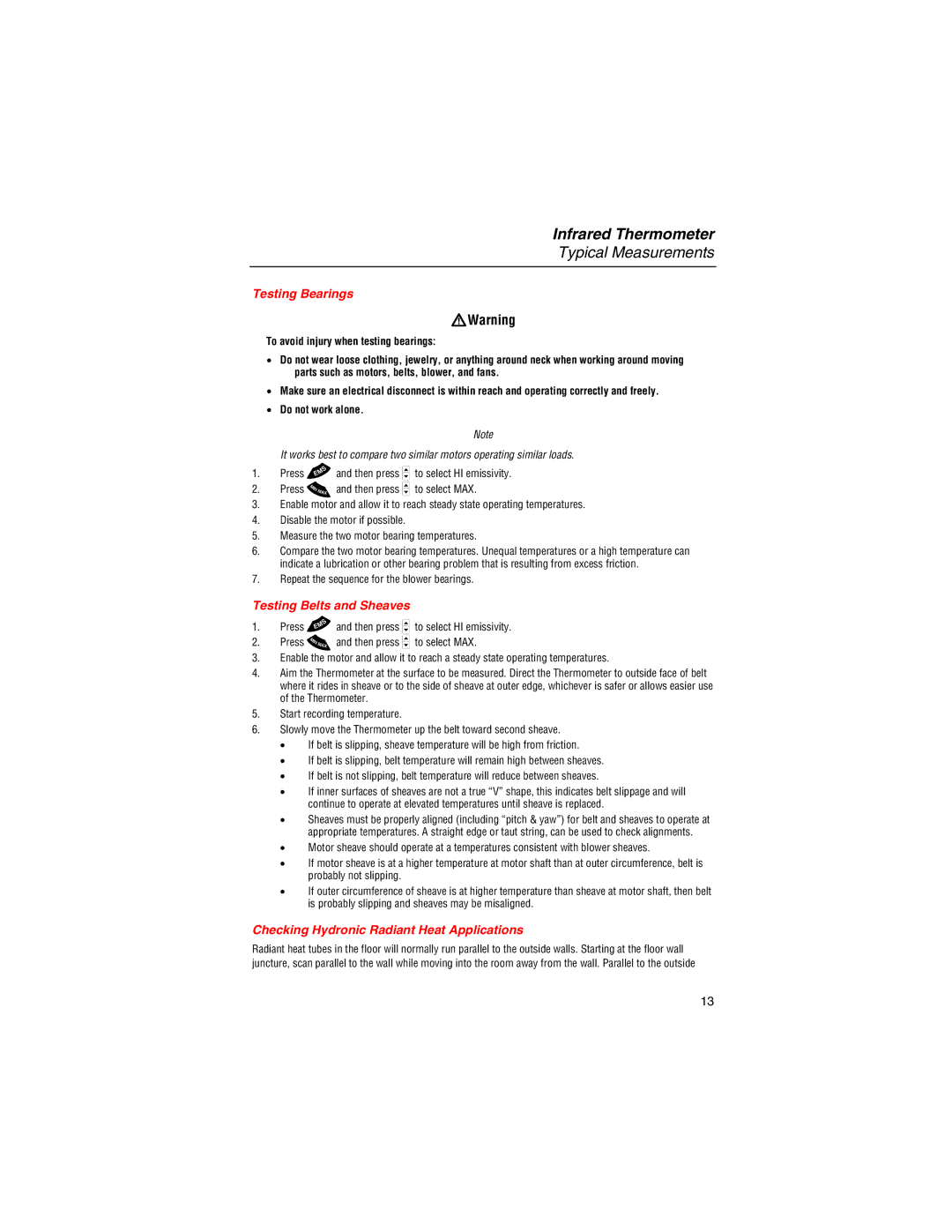Infrared Thermometer
Typical Measurements
Testing Bearings
WWarning
To avoid injury when testing bearings:
•Do not wear loose clothing, jewelry, or anything around neck when working around moving parts such as motors, belts, blower, and fans.
•Make sure an electrical disconnect is within reach and operating correctly and freely.
•Do not work alone.
Note
It works best to compare two similar motors operating similar loads.
1.Press Dand then press Ato select HI emissivity.
2.Press Cand then press Ato select MAX.
3.Enable motor and allow it to reach steady state operating temperatures.
4.Disable the motor if possible.
5.Measure the two motor bearing temperatures.
6.Compare the two motor bearing temperatures. Unequal temperatures or a high temperature can indicate a lubrication or other bearing problem that is resulting from excess friction.
7.Repeat the sequence for the blower bearings.
Testing Belts and Sheaves
1.Press Dand then press Ato select HI emissivity.
2.Press Cand then press Ato select MAX.
3.Enable the motor and allow it to reach a steady state operating temperatures.
4.Aim the Thermometer at the surface to be measured. Direct the Thermometer to outside face of belt where it rides in sheave or to the side of sheave at outer edge, whichever is safer or allows easier use of the Thermometer.
5.Start recording temperature.
6.Slowly move the Thermometer up the belt toward second sheave.
•If belt is slipping, sheave temperature will be high from friction.
•If belt is slipping, belt temperature will remain high between sheaves.
•If belt is not slipping, belt temperature will reduce between sheaves.
•If inner surfaces of sheaves are not a true “V” shape, this indicates belt slippage and will continue to operate at elevated temperatures until sheave is replaced.
•Sheaves must be properly aligned (including “pitch & yaw”) for belt and sheaves to operate at appropriate temperatures. A straight edge or taut string, can be used to check alignments.
•Motor sheave should operate at a temperatures consistent with blower sheaves.
•If motor sheave is at a higher temperature at motor shaft than at outer circumference, belt is probably not slipping.
•If outer circumference of sheave is at higher temperature than sheave at motor shaft, then belt is probably slipping and sheaves may be misaligned.
Checking Hydronic Radiant Heat Applications
Radiant heat tubes in the floor will normally run parallel to the outside walls. Starting at the floor wall juncture, scan parallel to the wall while moving into the room away from the wall. Parallel to the outside
13
